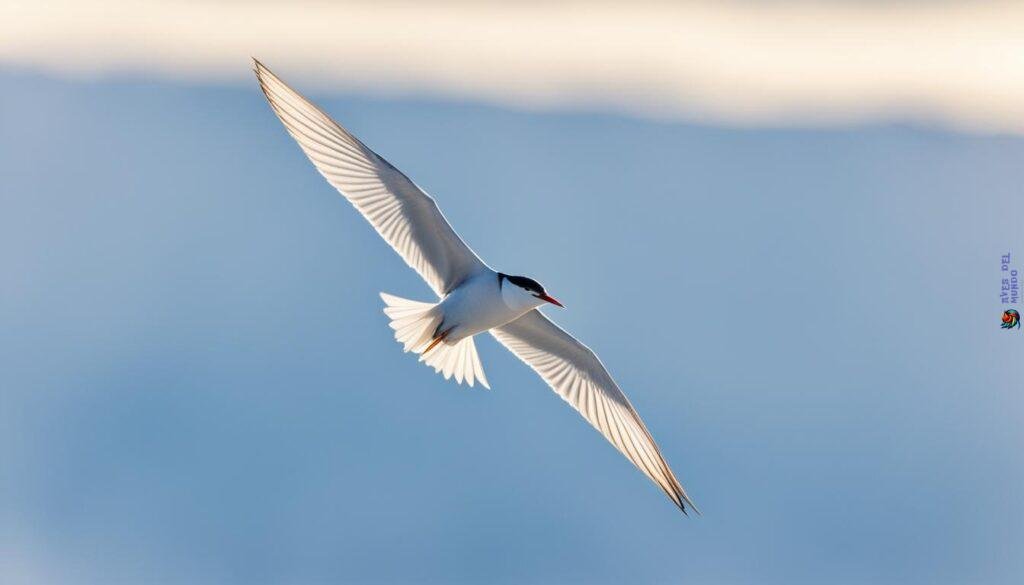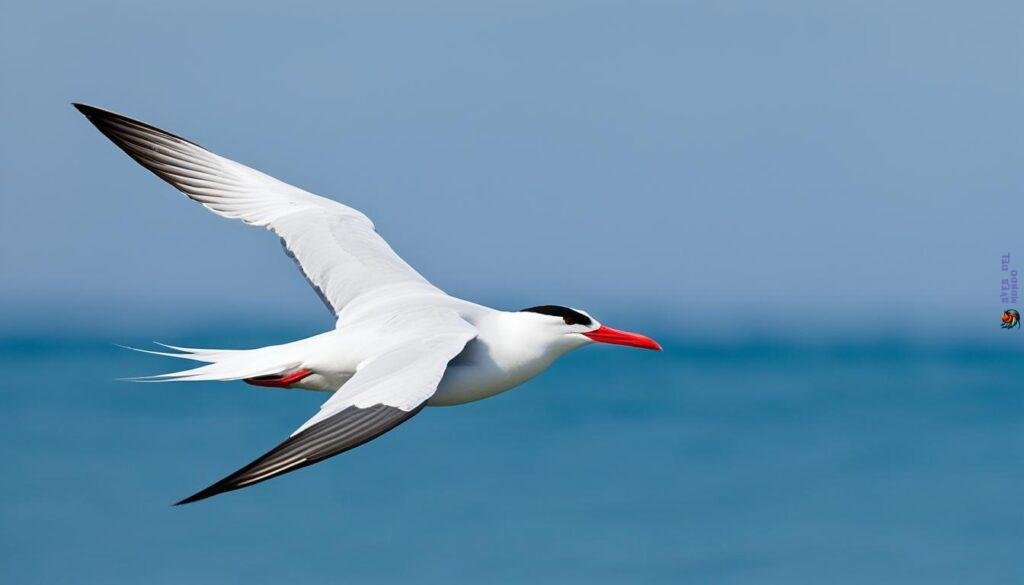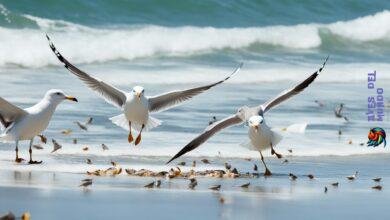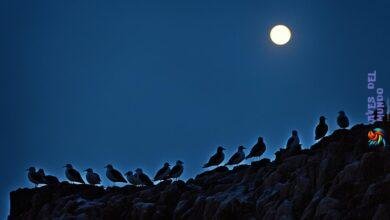Seagulls are fascinating birds that can be found across the globe. With numerous species and diverse characteristics, seagulls offer a captivating glimpse into the avian world. In this article, we will delve into the various types of seagulls and uncover the art of identifying these magnificent creatures.
Whether you’re an avid bird lover or simply curious about the different seagull species, this article will provide valuable insights into their unique traits and behaviors. From gulls and terns to Arctic Terns, Black-legged Kittiwakes, Caspian Terns, Laughing Gulls, Herring Gulls, and Great Black-backed Gulls, you’ll discover the exceptional diversity within the seagull family.
Understanding the distinctions between these seagull species is crucial for not only improving your knowledge of these birds but also enhancing your overall birdwatching experience. By identifying key characteristics such as size, color patterns, and habits, you’ll be able to spot specific seagull species in various habitats.
So join us on this exploratory journey as we unravel the mysteries of seagulls and equip you with the skills to identify different types of seagulls. Whether you’re by the coast, on a lake, or venturing to new territories, this article will be your guide to recognizing and appreciating the natural beauty of these magnificent birds.
Gulls and Terns
Gulls and terns are two families of birds that include several species of seagulls. These birds can be found in North America and are often seen near bodies of water or areas where human food is concentrated. Gulls and terns play an essential role in maintaining the ecosystem’s balance by controlling populations of smaller organisms such as insects and small fish.
Gulls, also known as seagulls, are medium to large-sized birds with varying plumage patterns. They have sturdy bodies, long wings, and webbed feet, which make them excellent swimmers and divers. Gulls belong to the family Laridae and are known for their scavenging behavior. They feed on a wide range of food sources, including fish, invertebrates, garbage, and even stolen human snacks. Some common gull species in North America include the Herring Gull, Laughing Gull, and Great Black-backed Gull.
Terns, on the other hand, are smaller birds that belong to the family Sternidae. They have slender bodies, long wings, and gracefully forked tails. Terns are highly skilled aerial hunters, known for their excellent diving abilities. They primarily feed on fish, diving into the water with precision to catch their prey. Some common tern species in North America include the Arctic Tern, Caspian Tern, and Black Tern.
| Gulls | Description |
|---|---|
| Herring Gull | A large gull with gray wings, white head, and body. Commonly found along the coastlines of North America. |
| Laughing Gull | A medium-sized gull with a characteristic black head during the breeding season, gray mantle, and black wingtips. Often seen near beaches and coastal areas. |
| Great Black-backed Gull | The largest seagull species with a nearly black mantle, black wingtips, and pink legs. Typically found along the north Atlantic coast. |
| Terns | Description |
|---|---|
| Arctic Tern | A graceful bird known for its long-distance migratory behavior, traveling from the Arctic to the Antarctic each year. |
| Caspian Tern | A large tern species with a distinctive harsh call. Commonly found in coastal areas and known for nesting on sandy or gravelly areas. |
| Black Tern | A small tern with a dark plumage and distinct white undertail. Prefers marshes, lakes, and rivers for nesting. |
Whether you’re near the ocean, a lake, or even a busy beachside boardwalk, keep an eye out for gulls and terns soaring overhead or resting on nearby rocks. Their presence adds to the coastal ambiance and reminds us of the diverse bird species that inhabit North America’s shores.
Arctic Tern
The Arctic Tern, a fascinating species of seagull, is renowned for its remarkable long-distance migratory behavior. Every year, these agile birds embark on an extraordinary journey from the Arctic to the Antarctic and back, traveling an astounding distance of nearly 22,000 miles. This epic voyage is one of the longest migrations undertaken by any animal on the planet, highlighting the strength and endurance of the Arctic Tern.
Arctic Terns are commonly found in coastal areas, where they gracefully soar through the air, showcasing their streamlined wings and impressive flight capabilities. Their aerodynamic design allows them to navigate the vast expanses of ocean and cover vast distances as they pursue their migratory routes. These seagulls primarily rely on fish as their primary source of sustenance, and their agile hunting skills are demonstrated through their remarkable diving ability. You can often witness an Arctic Tern plunging into the water with precision to catch its prey, reaffirming its position as a skilled and resourceful predator.

Observing the Arctic Terns in their natural habitats is truly captivating. These majestic birds thrive in the coastal regions they call home, providing researchers and nature enthusiasts with ample opportunities to study their behavior and characteristics. By understanding their habits and habitats, we gain deeper insights into the Arctic Tern’s role in the ecosystem and the unique adaptations that enable its long-distance migration.
Black-legged Kittiwake
The Black-legged Kittiwake is a small seagull species that is predominantly pelagic. They are often found in saltwater habitats such as the open ocean, beaches, and lower estuaries.
Unlike other gulls, the Black-legged Kittiwake does not typically forage in dumps or pastures. Instead, they have adapted to a diet that mainly consists of fish and other small marine organisms.
These migratory birds can be seen along the coast during migration periods, making their presence known with their distinctive calls and graceful flight patterns.
Seagull Behavior
The behavior of Black-legged Kittiwakes is fascinating to observe. They are highly social birds, and their colonies can sometimes number in the thousands. These colonies are typically located on cliffs, where the birds build nests out of seaweed, grass, and other materials.
«The Black-legged Kittiwake is known for its graceful flight and streamlined wings.»
Black-legged Kittiwakes are active during the day and are often seen diving into the water to catch fish. They have specialized adaptations, such as their dark wingtips and hooked beaks, which allow them to efficiently capture their prey.
Seagull Diet
The Black-legged Kittiwake primarily feeds on fish and small marine organisms. They are skilled hunters and use their keen eyesight to locate schools of fish near the water’s surface. Once they spot their prey, they swiftly dive into the water, using their wings to propel themselves underwater and grab the fish.
Their diet plays a crucial role in the ecosystem, as they help maintain the balance of fish populations in their habitats. By consuming small fish, they prevent overpopulation and contribute to the overall health of the marine environment.
Caspian Tern
The Caspian Tern is a fascinating and majestic seagull species that can be found in various habitats. These large birds are known for their distinctively harsh call, which adds to their unique charm.

Caspian Terns prefer nesting on sandy or gravelly areas located on islands, lakes, rivers, and marshes. Their choice of habitat demonstrates their close association with bodies of water. It is easy to spot them near coastal areas, as they forage both in water bodies and open areas where prey is exposed.
During the breeding season, Caspian Terns are common summer residents, utilizing their preferred nesting sites. They are excellent parents, fiercely protecting their nests and young. These intelligent birds demonstrate intriguing behavior, which includes cooperative feeding among nesting pairs. Witnessing their aerial acrobatics while diving to catch fish is truly awe-inspiring.
Outside of the breeding season, Caspian Terns can also be found in bays and estuaries along the coast during migration. They join migratory flocks, making their presence known with their distinct calls and striking appearance. Their migration patterns offer opportunities for bird watchers and nature enthusiasts to witness these magnificent creatures.
In conclusion, the Caspian Tern is a remarkable seagull species that inhabits diverse habitats and exhibits fascinating behavior. Its presence near water bodies and distinctive harsh call make it a standout among seagulls. Whether nesting or migrating, Caspian Terns leave a lasting impression on anyone fortunate enough to observe them in their natural habitats.
Notable Characteristics of Caspian Tern:
- Large size
- Distinctive harsh call
- Nests on sandy or gravelly areas
- Forages in water bodies and open areas
- Summer residents during the breeding season
- Migrates and can be found in bays and estuaries
For more information about seagulls and their fascinating behaviors, continue reading the upcoming sections of this article.
Laughing Gull
The Laughing Gull is a medium-sized seagull species commonly found along the Atlantic and Gulf coasts. With its dark gray mantle, black head during the breeding season, black wingtips, and deep red bill, the Laughing Gull is easily recognizable. It adds a vibrant touch to coastal landscapes.
One interesting aspect of Laughing Gull behavior is their agile flight. These gulls can be seen gracefully soaring along beaches, using their keen eyesight to spot schools of fish just offshore. When they spot their prey, they hover in the air and then dive headfirst into the water to catch their meal. It is an impressive display of their hunting skills.
Laughing Gulls are social birds and tend to gather in compact flocks, especially when resting on nearby shores or floating objects. During spring and fall, they become common transient visitors over the ocean, adding a lively touch to the seascape.
Laughing Gulls are known for their distinctive call, which sounds like a high-pitched laughing sound, hence their name. When their flocks start calling together, it creates a symphony that echoes along the coast.
Identifying Laughing Gulls is relatively straightforward due to their unique physical features. Their dark gray mantle, black head, and black wingtips stand out, separating them from other seagull species that may be present in the same area.
Laughing Gull Identification:
- Medium-sized seagull
- Dark gray mantle
- Black head during breeding season
- Black wingtips
- Deep red bill
Next, let’s explore another fascinating seagull species, the Herring Gull.
| Species | Size | Appearance | Habitat |
|---|---|---|---|
| Laughing Gull | Medium-sized | Dark gray mantle, black head during breeding season, black wingtips, deep red bill | Atlantic and Gulf coasts |
| Herring Gull | Large | Gray wings, white head and body, black wingtips | Across North America |
| Great Black-backed Gull | Largest seagull species | Nearly black mantle, black wingtips, pink legs | Along the north Atlantic coast |
Herring Gull
The Herring Gull is a large seagull species that can be found across North America. With its black wingtips, it shares some similarities with other gulls. Herring Gulls are known for their distinctive gray wings, white heads, and bodies. They have a robust build and measure approximately 22-26 inches in length.
These gulls are colonial nesters, often choosing rocky islands or spits in large freshwater marshes, lakes, and rivers as their preferred nesting sites. Their nests are built on the ground using grass, seaweed, and other materials found in their habitat. Herring Gulls demonstrate strong parental behavior and vigorously defend their nesting territories.
When it comes to foraging, Herring Gulls show versatility in their feeding habits. They can be found in a variety of habitats, including marshes, rivers, pastures, and other open areas. They are opportunistic feeders and scavenge for food in these habitats, taking advantage of available resources. Herring Gulls have also been observed flying several miles from their nests in search of food.
These gulls have a diverse diet that includes a wide range of prey. They feed on fish, insects, small mammals, crustaceans, and even carrion. Herring Gulls are known to steal food from other birds, making them quite adept at obtaining meals through a mix of hunting, scavenging, and kleptoparasitism.
With their distinct appearance and widespread distribution, Herring Gulls are relatively easy to identify. Their characteristic gray wings, white heads, and bodies, coupled with their black wingtips, set them apart from other gull species. Their loud, raucous calls further distinguish them in their natural habitat.
To help you better visualize the key features and characteristics of the Herring Gull, please refer to the table below:
| Features | Description |
|---|---|
| Size | Approximately 22-26 inches in length |
| Coloration | Gray wings, white heads, and bodies, with black wingtips |
| Diet | Fish, insects, small mammals, crustaceans, carrion |
| Habitat | Marshes, rivers, pastures, open areas |
| Behavior | Opportunistic foragers, colonial nesters |
As you explore the world of seagulls, the Herring Gull is an iconic species to observe. Its distinct appearance, versatile feeding habits, and colonial nesting behavior make it a fascinating subject for birdwatchers and wildlife enthusiasts.
Great Black-backed Gull
The Great Black-backed Gull is an impressive seagull species that can be found primarily along the north Atlantic coast. This magnificent bird is the largest seagull among its peers and boasts a striking appearance. With its nearly black mantle, black wingtips, and distinctive pink legs, the Great Black-backed Gull stands out from the crowd.
While its physical features are noteworthy, the behavior of the Great Black-backed Gull is equally remarkable. This seagull species is known for its bold and aggressive nature. It is often observed stealing food from other seabirds, displaying dominance and assertiveness.
«The Great Black-backed Gull’s audacious behavior is a testament to its adaptability and survival skills.» – Bird Watching Magazine
In terms of habitat, the Great Black-backed Gull nests on rocky islands or spits in large freshwater marshes, lakes, and rivers. These locations provide a suitable environment for breeding and raising their chicks. You may also spot them soaring through the sky, their impressive wingspan on display.
To better understand the distinguishing features of the Great Black-backed Gull, refer to the table below:
| Feature | Description |
|---|---|
| Size | Largest seagull species |
| Mantle | Nearly black |
| Wingtips | Black |
| Legs | Pink |
By understanding the unique characteristics and behavior of the Great Black-backed Gull, alongside other seagull species, you can develop a deeper appreciation for these fascinating birds. Whether they are soaring through the sky or displaying their assertiveness, seagulls continue to captivate us with their presence.
Common Gull Identification Tips
Identifying seagulls can be a challenging task, especially considering their similar appearances and changing plumage throughout different stages of their life. However, there are several key features you can look out for to help you identify gulls.
Paying attention to size, shape, and color patterns can provide valuable clues. The back color, head pattern, wing pattern, and leg color are all important characteristics to observe when trying to differentiate between gull species.
With practice, gull identification becomes easier, and you can start picking out even uncommon species in a flock. So, next time you spot a seagull, take a closer look and use these identification tips to discover the fascinating variety of gulls that exist.



